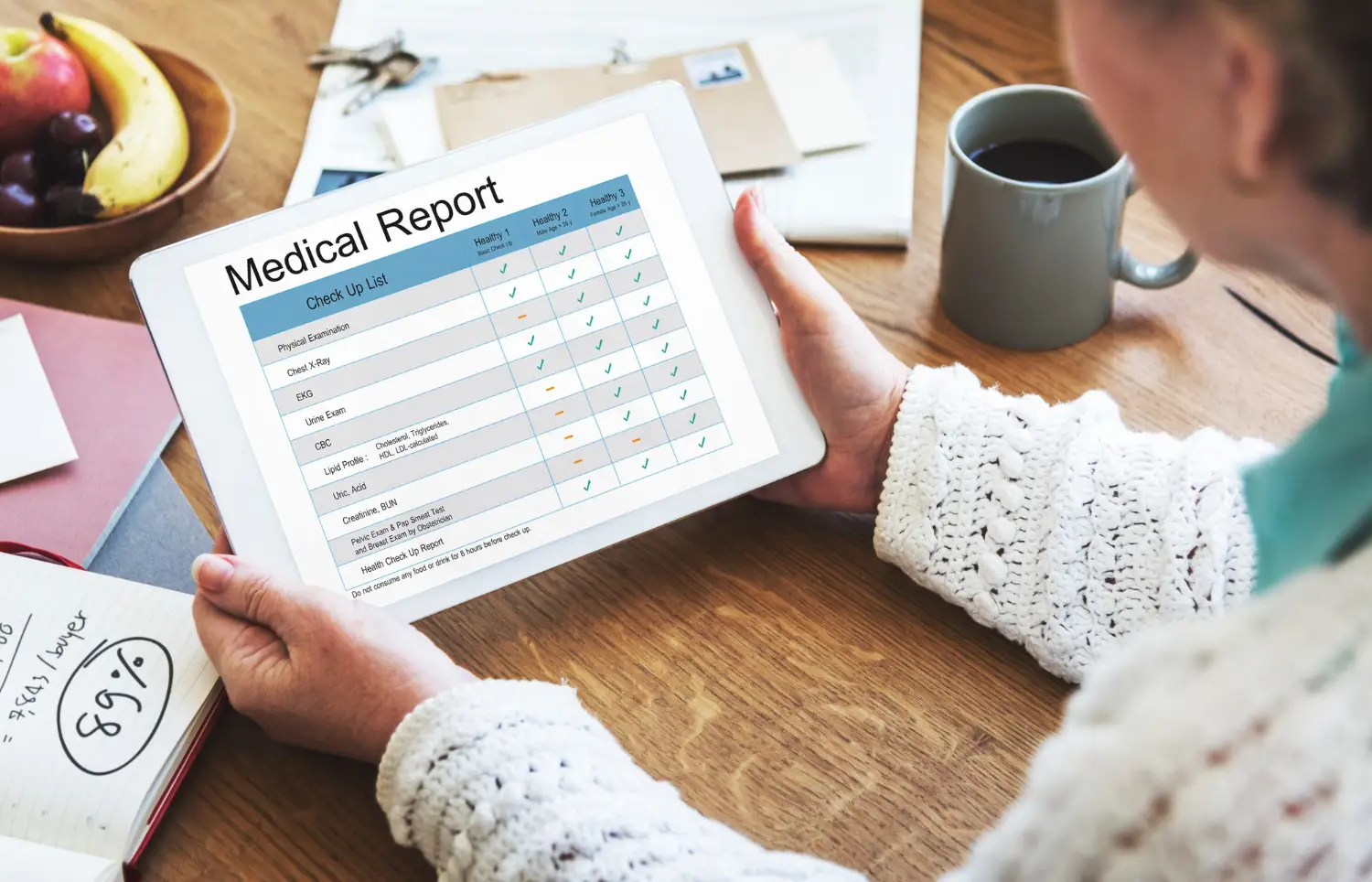Understanding the Role of IT in Safeguarding Healthcare
Integration of Information Technology (IT) services has become essential for many elements of patient care, record administration, and general operational efficiency in the quickly changing healthcare sector. However, with healthcare organizations depending more and more on linked databases and digital technologies, there is a greater chance of medical identity theft. Medical identity theft is a severe hazard to patients and healthcare providers since unauthorized individuals obtain sensitive health information. In this in-depth discussion, we will go over the many ways that IT services are essential for preventing and reducing the hazards related to medical identity theft.
Medical Identity Theft and How it Happens? The Growing Threat in Healthcare
In order to receive medical treatments, prescription drugs, or to make false insurance claims, fraudsters may illegally gain or exploit a person’s name, insurance information, or Social Security number. This is known as medical identity theft. Medical identity theft has serious repercussions that can affect people’s health, financial security, and the integrity of healthcare institutions as a whole.
Because it contains so much sensitive data, the healthcare sector is a top target for cybercriminals. Identity thieves find Electronic Health Records (EHRs) appealing because they hold a plethora of information, such as medical history, prescription details, and billing information. The repercussions of a successful medical identity theft can extend far beyond financial losses, affecting patient trust, compromising treatment accuracy, and leading to potentially life-threatening situations.
What is Medical Identity Theft?
When someone takes or illegally uses someone else’s personal information, including their name, Social Security number, or health insurance data, to receive medical products or services, it is known as medical identity theft. Since it involves the unauthorized access to and use of a person’s private health information, this type of identity theft can have major repercussions.
Unauthorized Use of Personal Information:
When someone commits medical identity theft, they typically use phishing, computer breaches, or physical document theft to obtain the victim’s personal information. In healthcare situations, this stolen data is subsequently used to assume the victim’s role. Using the victim’s identity to obtain healthcare services, therapy, or prescription drugs is the main objective of medical identity thieves. This may lead to fraudulent prescriptions, surgeries, or other medical treatments that are all billed to the victim’s insurance company or healthcare provider.
Submission of False Insurance Claims:
Criminals may file fictitious insurance claims for operations or medical services that were never rendered using the stolen data. Both the victim and the healthcare system may suffer financial losses as a result of this fraudulent activity. Unauthorized access to the victim’s medical data may result in the addition or modification of false information, which is known as medical identity theft. Since erroneous information may affect future medical decisions and treatments, this could have major effects on the victim’s health.
Financial Consequences:
Medical identity theft victims frequently experience financial hardship. Due to the fraudulent use of insurance benefits, filing false insurance claims can lead to higher premiums, out-of-pocket costs, and even the denial of coverage for necessary medical care. Medical identity theft has consequences that go beyond money. It can expose patient safety. There are serious hazards to a victim’s health when there is inaccurate information in their medical records since it can result in incorrect diagnoses, ineffective treatments, or mistakes with prescriptions.
Medical identity theft incidents might reduce public confidence in healthcare systems. Fearing possible data misuse, patients may become reluctant to offer accurate information to their healthcare professionals, which can obstruct the provision of prompt and efficient medical care. Healthcare organizations, IT specialists, and individuals must collaborate to put strong security measures in place, inform the public about the dangers, and continuously adjust to new threats in the constantly changing field of healthcare technology in order to prevent medical identity theft.
How IT Services Address Medical Identity Theft
IT services put in place safe patient portals that let people talk to healthcare practitioners and view their medical records. Strong authentication mechanisms, like two-factor authentication, provide an additional degree of protection by guaranteeing that sensitive data can only be accessed by authorized individuals.
Sophisticated encryption techniques are used to protect health data both in transit and storage. Sensitive information is rendered unintelligible by encryption, making it far more difficult for unauthorized individuals to intercept or alter the data. Sophisticated monitoring technologies are used by IT services to continuously evaluate network activity and spot any odd trends or possible security breaches. Systems for swiftly identifying and thwarting dangers before they become more serious are essential.
RBAC is a cornerstone of IT security that guarantees people may access just the data required for their tasks. IT services reduce the possibility of unauthorized access to private medical records by using RBAC in healthcare environments. By verifying that the individual gaining access to medical records is the actual account holder, biometric authentication techniques like fingerprint or face recognition offer an additional degree of protection. This reduces the possibility that someone may use stolen login information to obtain unauthorized access.
Regular Security Audits and Secure Transmission of Health Information
IT services create thorough education and training plans to raise healthcare personnel’s knowledge of possible cyberthreats. Employees with more knowledge and education are better able to identify security risks and take appropriate action. An effective cybersecurity plan must include both regular penetration testing and security audits. IT services carry out comprehensive evaluations to find holes and weak points in the system, enabling preventative actions to fortify security procedures.
Virtual Private Networks (VPNs) and other encrypted communication channels are used by IT services to guarantee the secure transmission of health information. This keeps data from being illegally intercepted while it’s being transferred between medical facilities and other organizations. The decentralized and tamper-resistant characteristics of blockchain technology are drawing more and more attention in the field of healthcare IT. IT services can reduce the danger of unauthorized access and manipulation by creating an immutable ledger through the use of blockchain technology in medical records.
To keep up with the most recent dangers and legal requirements, IT services collaborate with law enforcement and regulatory organizations. Through this alliance, healthcare organizations can more efficiently adjust their IT security procedures to meet changing problems. IT services have come a long way in preventing medical identity theft, but there are still several issues to be resolved, and new dangers need constant attention. Because attackers are always changing their strategies, cybersecurity is a dynamic field that requires a consistent commitment to enhancing security measures.
Cyber Threats & Interoperability Concerns
The methods used by cybercriminals are getting more and more complex; they are using sophisticated strategies like ransomware assaults and social engineering. IT services need to use cutting-edge technologies and proactive security measures to remain ahead of these always-changing dangers.
Upholding a cohesive and secure ecosystem is hampered by healthcare systems’ interoperability. Ensuring secure and seamless data interchange is a top responsibility for IT services as patient data is transferred across platforms and institutions. One major cybersecurity weakness is still the human component. Social engineering and phishing assaults frequently target gullible people in healthcare organizations. Programs for ongoing education and training are crucial to improving worker knowledge and defense against these kinds of attacks.
Strict data privacy laws, such as the US Health Insurance Portability and Accountability Act (HIPAA), must be followed by healthcare organizations. To ensure compliance, IT services must be aware of these rules and update security protocols frequently. IT services must assess and reduce security concerns when new technologies such as wearable health, Internet of Things (IoT) devices, and telemedicine are integrated into the healthcare ecosystem.
Global Collaboration
It is imperative to raise public awareness of the dangers of medical identity theft. Patients must take the initiative to protect their personal data and to report any suspicious activity right once. Creating instructional resources and awareness campaigns can benefit from the use of IT services. Cooperation between nations and international organizations is essential given the interconnectedness of the global healthcare scene. A united front against cyber threats affecting healthcare systems can be achieved through the global sharing of threat intelligence and best practices.
Conclusion
In summary, preventing and reducing the dangers related to medical identity theft are made possible in large part by the integration of IT services in the healthcare industry. The creation of a resilient healthcare IT infrastructure is facilitated by the continuous development and application of sophisticated security measures, as well as by cooperation with regulatory agencies and educational initiatives. Safeguarding confidential patient data is not only a moral and legal obligation but also essential to preserving the confidence and health of those who seek medical attention.
Healthcare companies and IT services need to be proactive, flexible, and alert in the face of changing cyber threats as technology develops. All parties involved in cybersecurity must work together to maintain this commitment, which includes the public, IT specialists, healthcare professionals, and regulators. Through a commitment to security, innovation, and a culture of ongoing development, the healthcare sector can guarantee that IT services continue to be a strong defense against the persistent threat of medical identity theft. In the end, providing high-quality, reliable, and patient-centered care in the digital age requires a secure and robust healthcare IT infrastructure.
Frequently Asked Questions:
What is medical identity theft, and why is it a concern?
The unlawful use or access of a person’s personal information to get prescription drugs, healthcare services, or insurance benefits is known as medical identity theft. Serious repercussions from this illegal activity may include lost money, hacked medical information, and possibly even injury from receiving the wrong medical care. The breach of privacy raises concerns since it could lead to the misuse of private health information, which would have an impact on the patient as well as the healthcare system. Strong security measures are required to protect patient information and stop such unauthorized access, as medical identity theft compromises the integrity of healthcare data in addition to endangering the well-being of the victim.
How can IT services contribute to preventing medical identity theft?
IT services are essential in stopping medical identity theft because of their strong cybersecurity protocols. To safeguard electronic health records (EHRs), intrusion detection systems, firewalls, and encryption are used to make sure unauthorized access is prevented. Only authorized individuals are permitted entry thanks to the use of strict access restrictions and authentication procedures. Moreover, IT services provide secured communication routes for safe data transfer. In order to reduce possible harm, security breaches are quickly detected and addressed via real-time monitoring and response systems. To strengthen the total defense against medical identity theft, IT services also run employee training programs and put email filtering in place to ward against phishing and social engineering.
What cybersecurity measures are essential in preventing medical identity theft?
Strong encryption techniques to protect electronic health records (EHRs), strict access restrictions and authentication procedures to prevent unwanted access, and the deployment of intrusion detection systems and firewalls are crucial cybersecurity measures to avoid medical identity theft. The defense against changing threats is further strengthened by routine security audits and updates. Healthcare companies should also place a high priority on staff training so they can spot and stop phishing efforts while still adhering to HIPAA and other data protection laws. A complete defense against medical identity theft is formed by the use of secure data transmission protocols, such as VPNs and encrypted communication channels, which guarantee the safe transfer of patient information.
How does IT help in secure management of electronic health records (EHRs)?
IT is essential to the safe administration of Electronic Health Records (EHRs) because it puts strong security mechanisms in place to safeguard private patient data. In order to protect data while it is in transit and at rest and prevent unauthorized parties from accessing or altering patient records, encryption methods are used. Only authorized workers are able to access EHRs thanks to authentication measures like multi-factor authentication, which confirm users’ identities. Access restrictions are implemented to restrict access to particular roles alone, hence limiting the possibility of unapproved viewing. The integrity and confidentiality of EHRs are preserved by frequent audits, system monitoring, and timely updates, which strengthens the overall security posture of healthcare institutions.
What role do authentication and access controls play in preventing unauthorized access?
Restrictions on access and authentication are essential for avoiding unauthorized access to personal medical information. By using techniques like passwords, fingerprints, or multi-factor authentication, authentication makes sure that only authorized users are able to operate the system. Access controls, on the other hand, define and limit the amount of access that each user has to the system. Healthcare organizations can restrict access to information to only those individuals who need it to perform their jobs with the help of strong access controls. When combined, these security measures form a multi-tiered defense that considerably reduces the likelihood of medical identity theft by minimizing the danger of unauthorized access and protecting patient data from potential breaches.
Get in touch with AlxTel
Need support? You are our priority, We’ve got you covered.
Rapid response time to service requests, responding to all customer feedback to get in touch.
Our goal is to supply you with the best possible customer service across all our products and solutions. We look forward to helping you make the most of your AlxTel platform.











